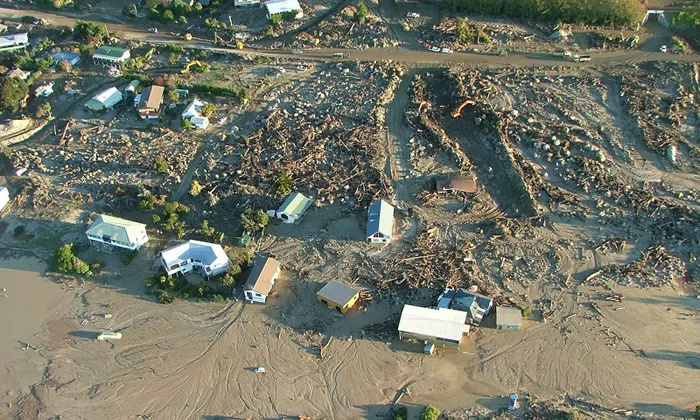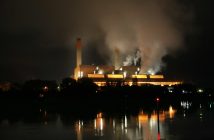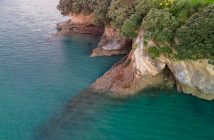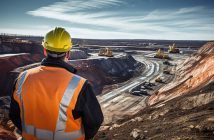Rebuilding some flood-damaged homes makes no sense, given the high risk of flooding in the future, some experts say

Simply put, managed retreat represents land use change; relocating people, assets, activities, and taonga, where appropriate, from dangerous locations. It can also involve ecosystem migration or restoration to mitigate environmental harm and build adaptive capacity, says University of Waikato’s Dr Christina Hanna, Dr Raven Cretney and Professor Iain White.
“Managed retreat is inevitable for some communities, public places and assets, and may be possible for some cultural and heritage sites across Aotearoa. For localities facing significant, recurrent harm and escalating risks, the questions pertaining to managed retreat are when, how, where to, and who pays?
“At present, managed retreats are socially and politically risky due to the lack of fit-for-purpose legislation and funding resources to enable effective and equitable outcomes. The proposed Climate Adaptation Act aims to address these technical, legal and financial issues,” the trio says.
“Even with a supportive policy environment, our research emphasises the scale of the challenges ahead. We must go beyond designing technical and legal mechanisms, to change social norms and expectations around property rights and resource management.
“This fundamentally involves re-imagining how we interact with places and environments as we adapt to climate change. Reconstructing our relationships with the environment to reflect changing risk, mātauranga Māori, justice, and space for nature is central to enabling managed retreats, and to avoid perpetual managed retreats.
“To do this, we need to look beyond the Climate Adaptation Act, to engage with broader institutional reform able to adjust our collective relationships with land, water, and property.”
University of Otago’s Professors Merata Kawharu and Professor Janet Stephenson say that a one-size-fits-all approach will not work.
“For some communities, relocation is part of their own history, whereby settlements or marae have been shifted due to flooding or erosion in the past. They may see future relocations as a part of their tikanga, their traditional response to such challenges.
“Others are deeply opposed to idea of relocating marae or wāhi tapu, and wish to see these places protected and preserved where they currently are.
“Local, regional and central government agencies need to listen carefully to each community to hear their needs. Each will be different. And each will take commitment and innovative thinking to resolve complex issues.”
Massey University’s Professor Bruce Glavovic says managed retreat is an extremely confronting and complex issue – not least because of the deep cultural, spiritual, social and livelihood ties that we have to the places we live.
“Attention is now being focused on whether or not to allow rebuilding in places devastated by Gabrielle and likely to be exposed to future extreme events. But there are many obstacles to enable planned relocation. Not the least obstacle is insurance provisions that lock-in development patterns with stipulations that result in replacement of ‘like with like’.
“We need to avoid ad hoc decisions that result in some people relocating and some people rebuilding in hazardous locations.
“We cannot allow new development in obviously exposed localities. And hold to account those who permit dangerous development decisions, including legal liability for councils and decision-makers.
“Lives are at stake.
“Action needs to be taken now. But we need to keep the distant future in mind, keeping options open that foster community well-being and resilience.
“Mātauranga Māori, local knowledge, and science and technical knowledge are key to building shared understanding about managed retreat.
“Ultimately, managed retreat is collective responsibility. It depends on strong bonds of trust and collaboration. We all have a role to play in future-proofing our flood-prone communities.
“The managed retreat challenge is now front and centre to the recovery of Gabrielle-impacted communities. And this challenge extends far beyond these communities. It is a challenge that faces all of us in Aotearoa New Zealand.”
University of Auckland’s Senior Lecturer Jon Tunnicliffe says while there will always be a role for flood defences, without appropriate space for the river to adjust and to spill over in places, some rivers are likely to continue looking to regain their equilibrium – in spite of human restraints on their evolution. In the process, this gives rise to tragic consequences and hardship for whānau and communities.
“The digital scanning of New Zealand’s historical air-photo record provides an exceptional window into the past behaviour of rivers, and their legacy of disturbance and change. In addition, high-resolution laser scanning (LiDAR) reveals the contours of past river courses, and evidence of their mechanisms of change and natural adaptation.
“While there is no going back in time, we can use this information to model likely scenarios of river change in light of an intensifying climate regime and alterations of landcover upstream, and to look strategically at how future planning might take better account of the requirements of a living river.
“Recent storm and cyclone events are forcing us to reimagine our river management paradigm, and consider how we can respond to evolving river systems.
“The cutting edge of this science is not just the instrumentation and model algorithms of river metamorphosis, but developing new knowledge with mātauranga Māori expertise, and fostering engagement with mana whenua, local knowledge holders, property owners and citizens more broadly to accommodate river geomorphic and ecological processes.
“The combination of new scientific techniques, broader expertise, iwi, hapū and community engagement, and new techniques for informed and structured deliberative local and national conversations to improve our resilience and capacity to live with New Zealand’s dynamic rivers,” Tunnicliffe says.
“When similar catastrophic flooding occurred along the Ottawa and St-Laurence river basins in Central Canada in 2018 and 2019 for instance, part of the provincial government’s response was to establish a transdisciplinary network of expertise and community know-how that combined universities, public research organisations, Indigenous leaders and local councils.
“It has been facilitating more informed decisions about where to defend, where to adapt and where to retreat, which in turn can make it (a bit) easier to figure out the how, the when and who pays.”








